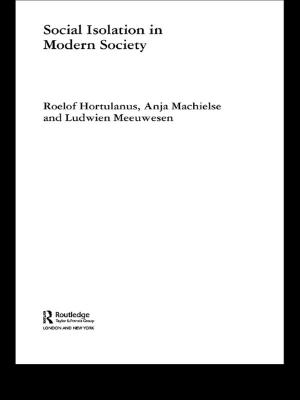| Author: | Michelle White | ISBN: | 9781351930970 |
| Publisher: | Taylor and Francis | Publication: | September 29, 2017 |
| Imprint: | Routledge | Language: | English |
| Author: | Michelle White |
| ISBN: | 9781351930970 |
| Publisher: | Taylor and Francis |
| Publication: | September 29, 2017 |
| Imprint: | Routledge |
| Language: | English |
The influence exercised by Queen Henrietta Maria over her husband Charles I during the English Civil Wars, has long been a subject of interest. To many of her contemporaries, especially those sympathetic to Parliament, her French origins and Catholic beliefs meant that she was regarded with great suspicion. Later historians picking up on this, have spent much time arguing over her political role and the degree to which she could influence the decisions of her husband. What has not been so thoroughly investigated, however, are issues surrounding the popular perceptions of the Queen that inspired the plethora of pamphlets, newsbooks and broadsides. Although most of these documents are polemical propaganda devices that tell us little about the actual power wielded by Henrietta Maria, they do throw much light on how contemporaries viewed the King and Queen, and their relationship. The picture created by Charles and Henrietta's enemies was one of a royal household in patriarchal disorder. The Queen was characterized as an overly assertive, unduly influential, foreign, Catholic queen consort, whilst Charles was portrayed as a submissive and weak husband. Such an image had wide political ramifications, resulting in accusations that Charles was unfit to rule, and thus helping to justify Parliamentary resistance to the monarch. Because Charles had permitted his Catholic wife to interfere in state matters he stood accused of threatening the patriarchal order upon which all of society rested, and of imperilling the Church of England. In this book Michelle White tackles these dual issues of Henrietta's actual and perceived influence, and how this was portrayed in popular print by those sympathetic and hostile to her cause. In so doing she presents a vivid portrait of a strong willed woman who had a profound influence on the course of English history.
The influence exercised by Queen Henrietta Maria over her husband Charles I during the English Civil Wars, has long been a subject of interest. To many of her contemporaries, especially those sympathetic to Parliament, her French origins and Catholic beliefs meant that she was regarded with great suspicion. Later historians picking up on this, have spent much time arguing over her political role and the degree to which she could influence the decisions of her husband. What has not been so thoroughly investigated, however, are issues surrounding the popular perceptions of the Queen that inspired the plethora of pamphlets, newsbooks and broadsides. Although most of these documents are polemical propaganda devices that tell us little about the actual power wielded by Henrietta Maria, they do throw much light on how contemporaries viewed the King and Queen, and their relationship. The picture created by Charles and Henrietta's enemies was one of a royal household in patriarchal disorder. The Queen was characterized as an overly assertive, unduly influential, foreign, Catholic queen consort, whilst Charles was portrayed as a submissive and weak husband. Such an image had wide political ramifications, resulting in accusations that Charles was unfit to rule, and thus helping to justify Parliamentary resistance to the monarch. Because Charles had permitted his Catholic wife to interfere in state matters he stood accused of threatening the patriarchal order upon which all of society rested, and of imperilling the Church of England. In this book Michelle White tackles these dual issues of Henrietta's actual and perceived influence, and how this was portrayed in popular print by those sympathetic and hostile to her cause. In so doing she presents a vivid portrait of a strong willed woman who had a profound influence on the course of English history.















